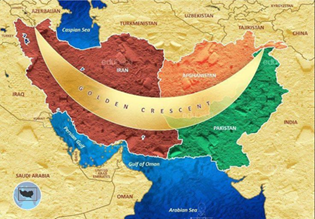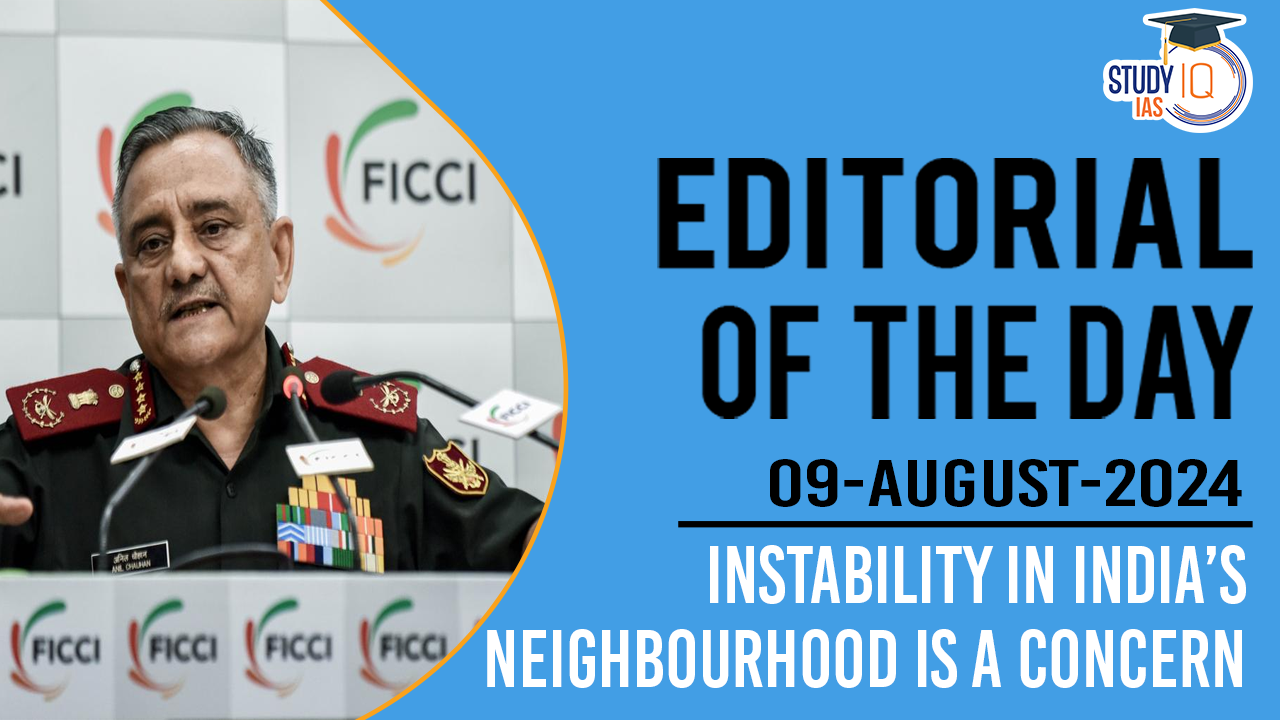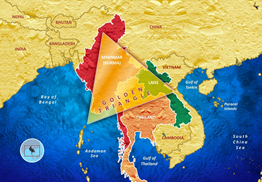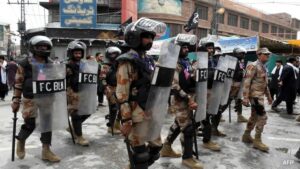Table of Contents
Context: At the Ammunition India conference organised by the Federation of Indian Chambers of Commerce and Industry, Chief of Defence Staff (CDS) General Anil Chauhan said the “instability in our neighbourhood” is a cause of concern.
Major Security Challenges for India
- Proxy War by Pakistan: Ongoing proxy war in Jammu and Kashmir, particularly escalating in the south of Pir Panjal.
- Border Dispute with China: Prolonged and unresolved border dispute, with troops in a standoff at certain friction points in eastern Ladakh.
- Pangong Tso Lake: This high-altitude lake has been a major flashpoint, with both Indian and Chinese troops stationed on its northern and southern banks. The area saw significant clashes in 2020.
- Galwan Valley: The site of a deadly clash in June 2020, where soldiers from both sides lost their lives. This incident marked a significant escalation in tensions.
- Hot Springs and Gogra: These areas have seen standoffs and troop build-ups. Both sides have engaged in talks to de-escalate the situation here.
- Depsang Plains: This strategic area has seen Chinese incursions, leading to concerns about the security of the nearby Daulat Beg Oldi airstrip.
- Demchok: Another area of contention, with reports of Chinese infrastructure development and troop movements.
- Neighbourhood Instability: Instability in neighbouring countries is a cause for concern.
- Example: Political instability in Bangladesh.
Global Geopolitical Environment
- State of Flux: Described the global geopolitical environment as being in a state of significant disruption.
- Forms of disruption: Technological, economic, environmental (climate change), demographic, migration, and issues of peace and security.
- Other ongoing conflicts include Myanmar, Sudan, Congo, Libya, Syria, Yemen, and Armenia, though some of these have temporarily settled.
Global Security Challenges
- Volatility, Uncertainty, Complexity, and Ambiguity (VUCA): The world is in a highly volatile and uncertain phase, the most violent since World War II.
- Impact on Defence Supply Chains: The volatility severely impacts global defence supply chains, especially ammunition, with a significant gap between demand and supply.
Suggestion For Improvement
- Promotion of ‘Aatmanirbharta’: Emphasised the need for the collaboration between the Services, defence industries, scientists, and academia.
- Stressed the significance of self-reliance (Aatmanirbharta) to maintain strategic autonomy.
- Technological Innovations: Innovations in technology, tactics, and ammunition, citing examples from the Ukraine conflict and the Kargil war.
- Opportunities in Disruptions: Stated that disruptions in global defence supplies present opportunities for global defence manufacturers, including Indian markets.
- Strong Armed Forces and Industrial Sector: Stressed that a strong armed force backed by a robust industrial sector is essential for national security.
- Defence Diplomacy: Indigenous capabilities can enhance defence diplomacy and open new opportunities for the defence industry.
Recent Instabilities in India’s Neighbourhood
Bangladesh
- Sheikh Hasina resigned as Prime Minister and fled the country due to violent protests.
- Protests began over a controversial job quota system and escalated to demands for Hasina’s resignation.
- Hundreds of people were killed in the crackdown on demonstrations.
- General Waker-Uz-Zaman announced Hasina’s resignation and promised an interim government.
- The Border Security Force (BSF) issued a high alert along the India-Bangladesh border.
- India is closely monitoring the situation, given its strategic interests and past cooperation with Hasina.
Impact of Instability in Neighbourhood on India
- Security Concerns: Instability in neighbouring countries leads to heightened security concerns for India.
- Examples: Violent protests and political unrest in Bangladesh have prompted India to issue a high alert along the India-Bangladesh border.
- The armed rebellion in Myanmar has resulted in an influx of refugees into India’s northeastern states, straining local resources and security.
- Examples: Violent protests and political unrest in Bangladesh have prompted India to issue a high alert along the India-Bangladesh border.
- Issue of drug smuggling: It is also destroying the social fabric of Indian society due to Pakistan’s Myanmar vicinity and India being in the middle of the ‘Golden Crescent’ and ‘Golden Triangle’.
- Strategic Loss: Political instability in neighbouring countries can lead to the loss of strategic allies for India.
- Examples: With Sheikh Hasina’s resignation, India has lost a reliable ally who helped combat terror groups in the region.
- Economic Impact: Instability in neighbouring countries can have economic repercussions for India through trade disruptions and strained resources.
- Example: Frequent government changes in Nepal can delay or alter the progress of bilateral projects like the Pancheshwar Multipurpose Project, affecting water resource management.
- Kaladan Multi-Modal Transit Transport Project (India and Myanmar) has encountered numerous obstacles, primarily due to Myanmar’s political instability, ethnic armed groups, and law and order issues.
- Humanitarian and Refugee Issues: Political instability in neighbouring countries often leads to humanitarian crises, including refugee influxes, which India must address.
- Examples: Rohingya crisis in Myanmar led to thousands of refugees seeking asylum in India, putting pressure on resources and infrastructure.
- Example: Frequent government changes in Nepal can delay or alter the progress of bilateral projects like the Pancheshwar Multipurpose Project, affecting water resource management.
| What is the Golden Crescent? |

|
| Golden Triangle |
| The area where the borders of Thailand, Laos, and Myanmar meet at the confluence of the Ruak and Mekong rivers.
|
| Facts |
|



 Operation Baam: Baloch Separatist Group ...
Operation Baam: Baloch Separatist Group ...
 National Register of Indian Citizens (NR...
National Register of Indian Citizens (NR...
 World Population Day 2025, Themes, Histo...
World Population Day 2025, Themes, Histo...





















